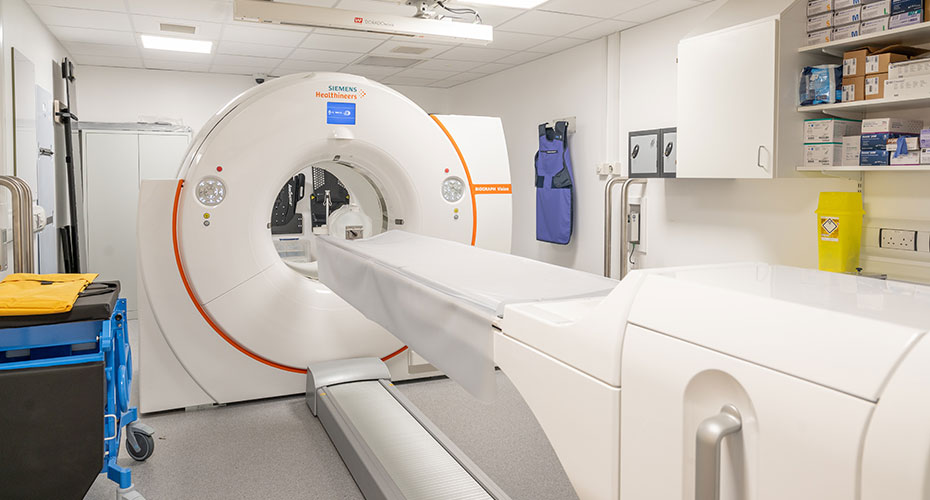PET-CT scanner
The Siemens Biograph Vision 600 PET-CT scanner offers a next-generation scanner that empowers researchers to achieve higher spatial and temporal resolution and, maximise workflow efficiency. Through our collaborations, we have a large portfolio of world-leading PET radioligands, which are employed across our research studies. The PET-CT scanner also provides additional capacity for NHS patients to be clinically scanned.
About PET scanning
Molecular imaging with Positron Emission Tomography (PET) is a rapidly growing field of research and provides invaluable insights into ongoing phenomena taking place at a molecular level. Using ligands, designed for the target of interest, labelled with short-lived isotopes, PET imaging enables the quantification of molecular targets in living humans. Researchers can visualise and quantify molecular targets such as receptors, proteins, enzymes and markers of inflammation. PET imaging is able to provide quantifiable data about disease mechanisms and therapeutic targets. At the Centre, we are developing world-leading methodologies for the analysis and modelling of PET data.
We offer a range of radiopharmaceuticals, depending on the target of interest, including fluorinated-18 radiotracers for tau and amyloid protein. These are supplied externally.
About CT scanning
A computerised tomography (CT) is a versatile non-invasive imaging technique, using x-ray beams, which can be employed in a research and clinical setting to acquire detailed images of tissues and organs inside the human body. CT scans can provide important information on hard tissues, such as bones, as well as soft tissues such as muscle, blood vessels and tumours, hence aiding in the diagnosis of a wide range of medical conditions, as well as in the follow-up after medical or surgical treatments. A contrast dye may be administered prior to the scan to highlight specific areas of interest. CT scans can be used to provide meaningful information as standalone scans as well as acquired alongside PET scans to aid the analysis and interruption of PET data.




